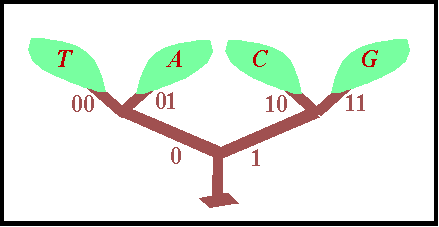 ith
the astounding acceleration of speeds in computing and
communications year
by year, with the vanishing costs of memory in all
forms, why would anybody
be interested in the Conservation
of Bits? ith
the astounding acceleration of speeds in computing and
communications year
by year, with the vanishing costs of memory in all
forms, why would anybody
be interested in the Conservation
of Bits?
Well, it seems there is no such thing as too fast or too economical. Besides, Conservation of Bits, better known as "data compression," is itself responsible for much of the progress in digital technologies.Indeed, every day we enjoy benefits of super speed and small space afforded by compressed data files in the form of... documents attached to our e-mail messages,For the Conservation of Bits, each particular data compression algorithm exploits the statistical properties of...
Take, for example, the symbols T, A, C,
and G representing
the four nucleotides in DNA. The Martian Microbe
puzzle applied a simple, fixed length coding
scheme for transmitting
long sequences of those symbols, which is depicted
here in the form of
a coding tree.
That 'dibit' code is reprised in the table below alongside the frequencies of nucleotides observed in life on earth. |
||||||
|

